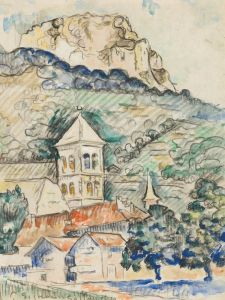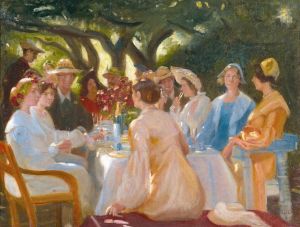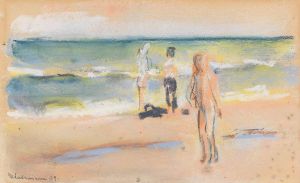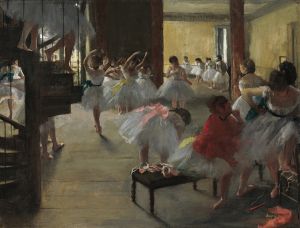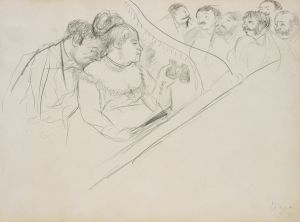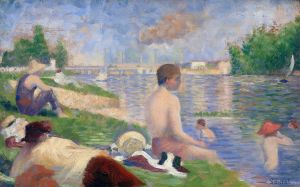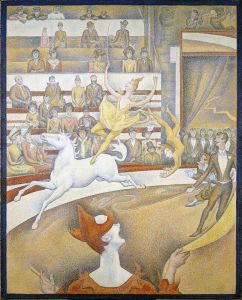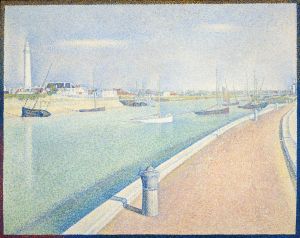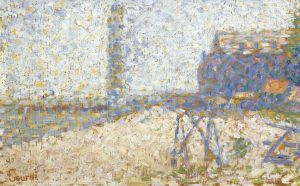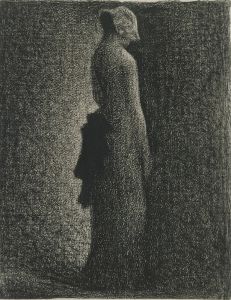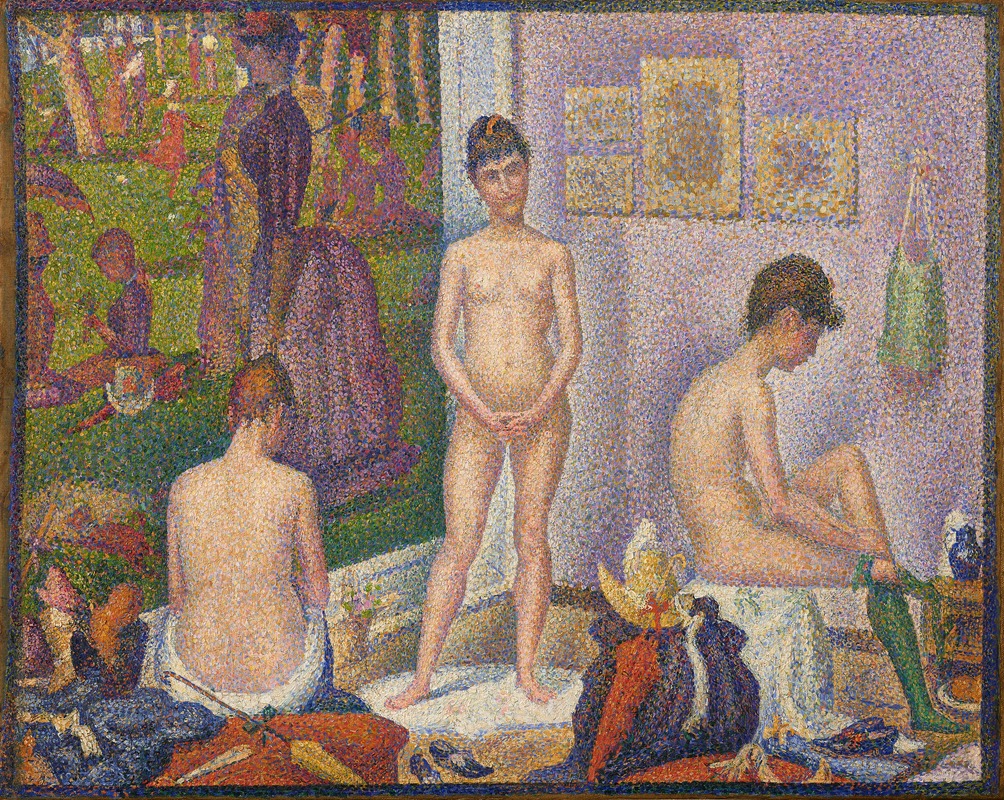
Les Poseuses, Ensemble
A hand-painted replica of Georges Seurat’s masterpiece Les Poseuses, Ensemble, meticulously crafted by professional artists to capture the true essence of the original. Each piece is created with museum-quality canvas and rare mineral pigments, carefully painted by experienced artists with delicate brushstrokes and rich, layered colors to perfectly recreate the texture of the original artwork. Unlike machine-printed reproductions, this hand-painted version brings the painting to life, infused with the artist’s emotions and skill in every stroke. Whether for personal collection or home decoration, it instantly elevates the artistic atmosphere of any space.
Les Poseuses, Ensemble is a notable painting by the French post-impressionist artist Georges Seurat. Completed in 1888, this artwork is a significant example of Seurat's pioneering technique known as pointillism, a method characterized by the application of small, distinct dots of color that are applied in patterns to form an image. This technique was part of a broader movement known as Neo-Impressionism, which Seurat helped to establish.
The painting depicts three female figures in a studio setting, each in a different pose. The title "Les Poseuses" translates to "The Models" in English, which directly references the subject matter of the artwork. The figures are believed to be modeled by the same woman, shown in various stages of undress, which was a common practice in academic art to study the human form. The composition is carefully arranged to explore the interplay of light and color, a hallmark of Seurat's work.
Seurat's interest in color theory and optical effects is evident in Les Poseuses, Ensemble. He meticulously applied his pointillist technique to create a vibrant surface that invites viewers to engage with the painting from a distance, where the colors blend optically, rather than physically mixing them on the palette. This approach was influenced by scientific theories of color and perception, particularly those of Michel Eugène Chevreul and Ogden Rood, whose works on color contrast and harmony informed Seurat's artistic practice.
The painting also reflects Seurat's interest in the relationship between art and life. By placing the models in a studio setting, Seurat blurs the line between the artifice of the studio and the reality of the models' presence. This theme is further emphasized by the inclusion of Seurat's earlier masterpiece, "A Sunday Afternoon on the Island of La Grande Jatte," in the background of Les Poseuses, Ensemble. This self-referential element serves to connect the two works and highlights Seurat's exploration of the act of painting itself.
Les Poseuses, Ensemble was first exhibited at the Salon des Indépendants in 1888, an exhibition that was crucial for artists who were not part of the official Salon, allowing them to present their work to the public. The painting was well-received by some contemporaries who appreciated Seurat's innovative approach, although it also faced criticism from those who were resistant to the new techniques and ideas proposed by the Neo-Impressionists.
Today, Les Poseuses, Ensemble is regarded as a masterpiece of Neo-Impressionism and a testament to Seurat's skill and vision as an artist. It is housed in the Barnes Foundation in Philadelphia, Pennsylvania, where it continues to be studied and admired for its technical brilliance and its contribution to the development of modern art. Seurat's work, including Les Poseuses, Ensemble, remains influential, inspiring subsequent generations of artists to explore the possibilities of color, form, and technique in new and innovative ways.






